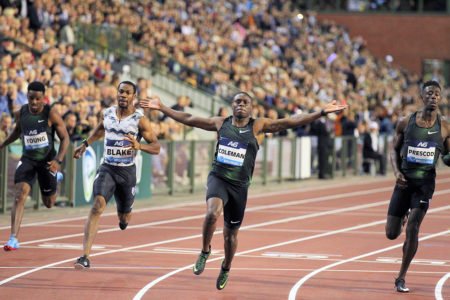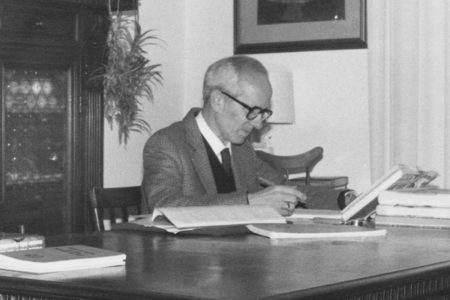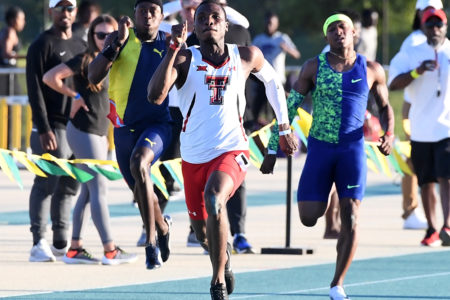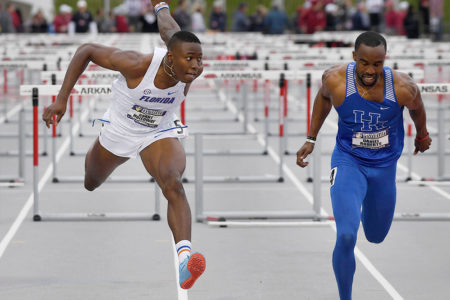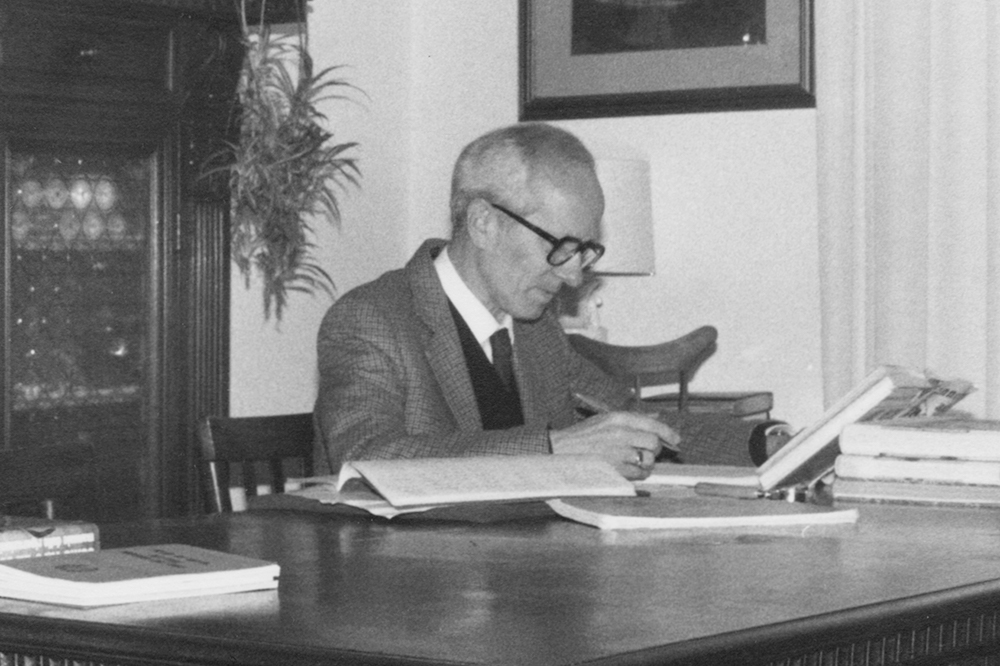
MAY 13 brought the sad news of the passing of one of the sport’s truly larger-than-life figures, T&FN’s longtime European Editor and World Rankings compiler Roberto Quercetani, at the age of 97 in his beloved Florence.
“RLQ,” as he was typically referred to in the written world, was an integral part of T&FN from the get-go (see the editor’s column for more). There’s no better way to begin to tell the tale of his illustrious career than by reprinting an article written by Norris McWhirter (one of the creators of the Guinness Book Of World Records) that appeared in the December ’52 edition of T&FN after an initial appearance in Athletics World:
“Among the small crowd watching the Italy vs. Germany international at Milan on the afternoon of July 15, 1939, was a 16-year-old boy. His interest in track & field athletics dated from 2 years earlier when he saw an AAU team that was touring Italy. Now he was witnessing the most unapproachable performance in track history—the mighty Rudolf Harbig’s 800m World Record of 1:46.6.
“From then on Roberto Luigi Quercetani steeped himself in the statistics of the world’s oldest sport. No radio report, no newspaper clipping escaped him as he worked away by the light of an oil lamp in his family’s picturesque old house in the San Jacopo quarter of Florence. The war brought personal tragedy and bereavement when the Wehrmacht carried out their clumsy demolition round the medieval Ponte Vecchio, but despite this, by the time the tide of battle had rolled past the 21-year-old Florentine had become the master of many languages—languages essential to one who had now become the greatest connoisseur of athletics in the world.
“Every moment that could be spared from his daily work in the sumptuous Secretary’s office of the Government Tourist Bureau or his lectures at the University of which he has a Doctorate of Philosophy were spent in rescuing or collating performances made in the inter-war years.
“His correspondence grew and grew but none was more assiduously conducted than that with the brilliant American doctor of mathematics, Donald H. Potts. Mrs. Potts once described the correspondence—which reaches over 30 close-typed quarto sheets per letter, as ‘short introductions to interminable PS’s.’ In 1948 they published together a fabulous 70-page booklet listing the 100 best marks of all time in each event. The sales were pathetically small but gradually the booklet filtered out into the hands of enthusiasts in many countries. Two years later the authors learnt that the XIVth Olympic Games had been seeded largely upon its invaluable data.
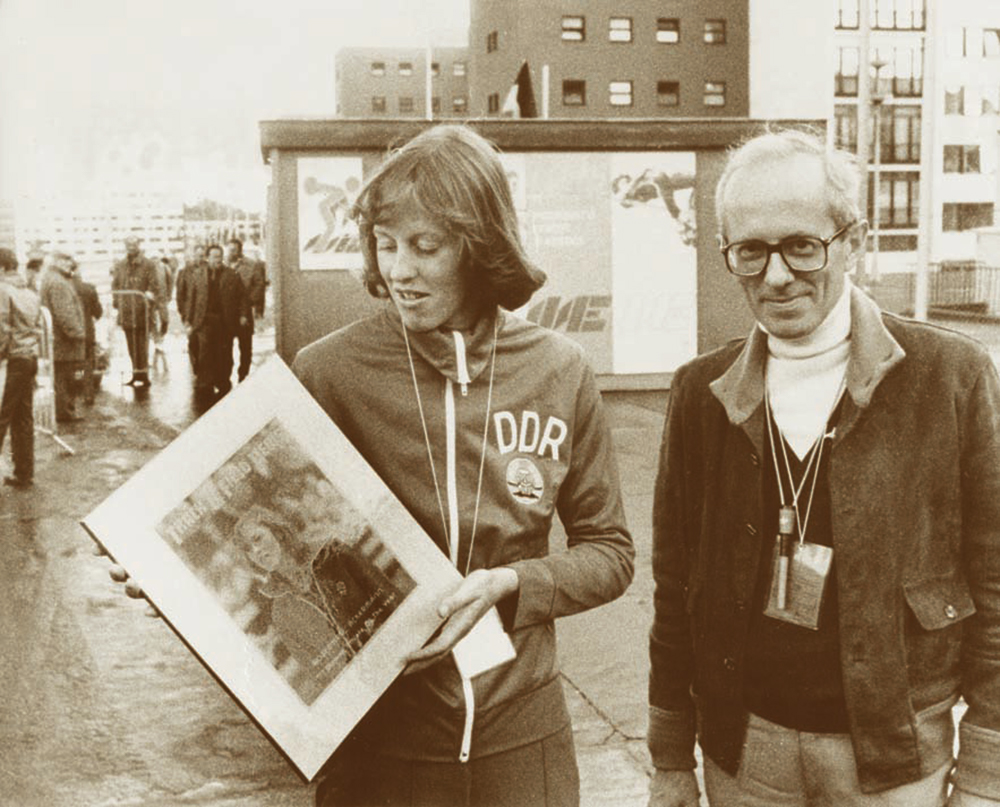
“In July 1950, on the way back from Greece, the author made a visit—or should he say pilgrimage—to Florence to see the man who was able to make figures live so vividly. From a callbox in Firenze railway station came a quiet cultured voice speaking perfect English with a slight American intonation, apologizing for his ‘poor’ English since he had been unable to find anyone to converse with in it for the past 11 years! He invited myself and a companion to dinner in a cafe by the river and there he talked of the great athletes of the past as if they were close acquaintances. He also talked of his plan of founding an association of track & field statisticians to coordinate their efforts. His approach was beyond the narrow nationalistic one of most sportswriters. One felt that here was a man whose only wish was that others could share his enjoyment—an enjoyment born of intense interest and remarkable knowledge.
“A month later in another cafe in Rue de la Montagne in Brussels the ATFS [Association of Track & Field Statisticians] was formed. Quercetani, who was in the chair, conducted the inaugural meeting in German, French, English & Italian. In addition, he reads Swedish, Spanish and even dabbles with the most impossible of languages, Finnish.
“Though only 30 years old the spare, bespectacled wizard, who said of himself, ‘My personal non-participation in athletics was of little loss to Italy,’ has made his impact greatly felt. Perhaps his greatest task lies ahead.”
Roberto turned out no end of great tasks for us, beginning with the second edition ever of the magazine (or as it was then, “newspaper”), March ’48, writing a long column of international analysis in which we referred to him as “one of the world’s foremost track experts.” Talk about understatement.
A 60-Year Career
For some 6 decades in the blocks RLQ burnished his legend, finally hanging up his World Rankings spikes after the ’07 season, explaining in our February ’08 edition, “That of 2007 was my 60th venture in World Rankings history and I decided it should also be my last. Not the least reason for this decision is to be found in the cleverness of my teammates. They’ll have no trouble in brilliantly going on.”
In a farewell piece he penned in that issue, RLQ explained his role in the World Rankings: “Track & Field News and World Ranking are astrological twins in the strictest sense of the word. Both came to life in February 1948 in a large-format issue. Cordner Nelson was the inventor of the World Rankings. In said issue he presented his World Ranking Of Top 20 Men In 1947, with entries lined up on the basis of championships won, consistency of performance and victories over star athletes. Most were listed with only two or three marks, made in significant competitions.
“For the ’48 season, the Nelson brothers invited Don Potts and me to take over. As rabid statisticians who had been helping the Nelsons since the start of their hard venture, we obviously had no objections. First we decided to cut the number of entries to 10 per event, giving for each man all or most of his marks for the season. The criteria we adopted—1. honors won; 2. win-loss record; 3. sequence of marks—are still in place today.
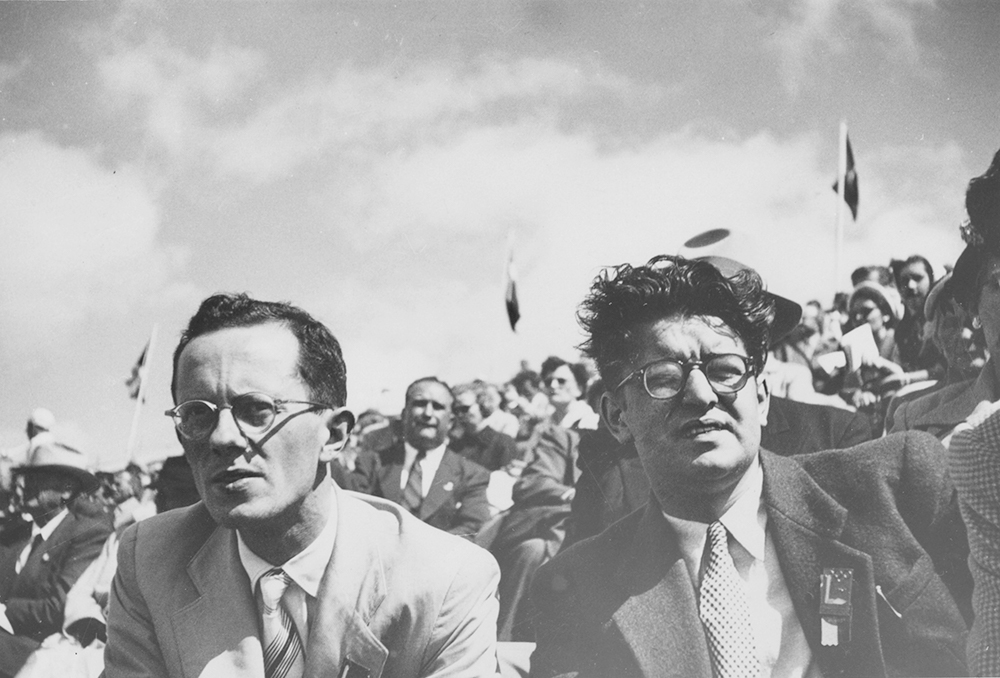
“Each of us acted as compiler of half the events and as consultant for the other half. Whenever we couldn’t agree on a given choice, the final decision was made by the compiler of that particular event.
“By the summer of ’48 T&FN had adopted a magazine-sized format and the text appeared in mimeographed form. That technical story has a funny side: Don and I used to send our stuff in typewritten form and readers familiar with our machines could tell whether the event ‘belonged’ to Don or to me.
“We did our best to treat all candidates evenly. Don, true to his ethics as a man of science, was impermeable to chauvinism; I was probably helped along that line by my life-long aspiration to be a citizen of the world, cultivated through the study of foreign languages. I can recall only one major case in which neither was fully satisfied with his own choice—Don slightly favored an Italian and I slightly favored an American. A third party helped us avoid a tie, which would have been against our ‘regulations.’
“Back in ’48 Don once rejoiced because our letters had made the round trip USA–Italy–USA in what he called record time—11 days! Not to mention how difficult it was to learn about marks from far and wide. On the other hand, I believe the game is probably more difficult now than it used to be. International meets are far more numerous than they once used to be.
“Take Fortune Gordien and Adolfo Consolini, once the cream of discus throwing. Between ’48 and ’56 they locked horns only 4 times—3 of them in the Olympic Games and only once in a lesser meet. On the contrary, in ’07 we had a case the likes of which I had never faced before. In the 800, Alfred Kirwa Yego of Kenya ran 13 finals. Of these he won just one—the Worlds! Given his many losses in other races, we ranked him no higher than No. 7.”
There’s no doubt where RLQ belongs in the pantheon of the sport’s all-time experts: No. 1. ◻︎
